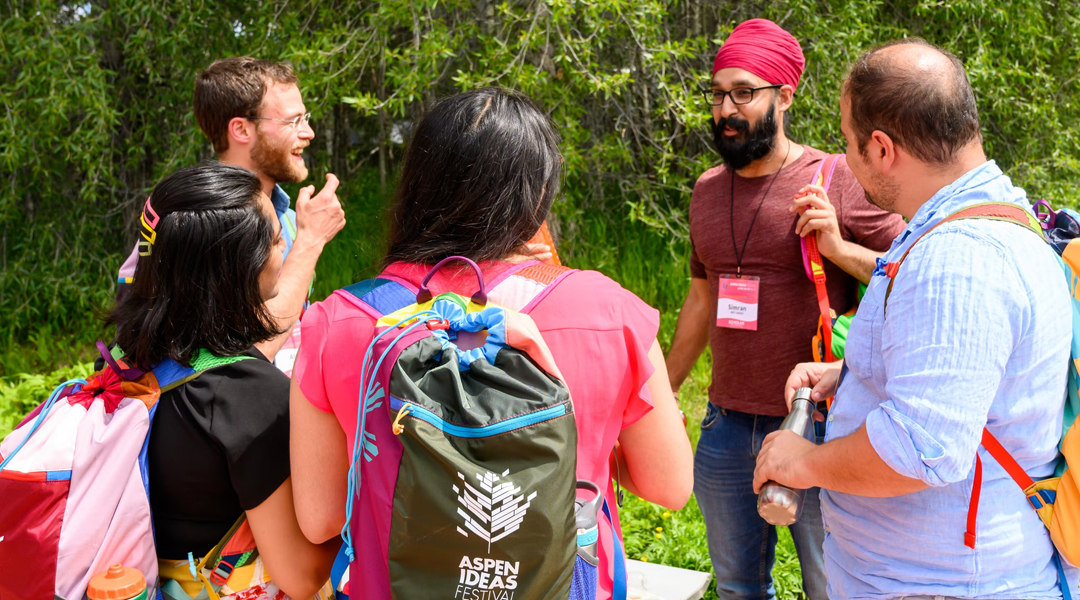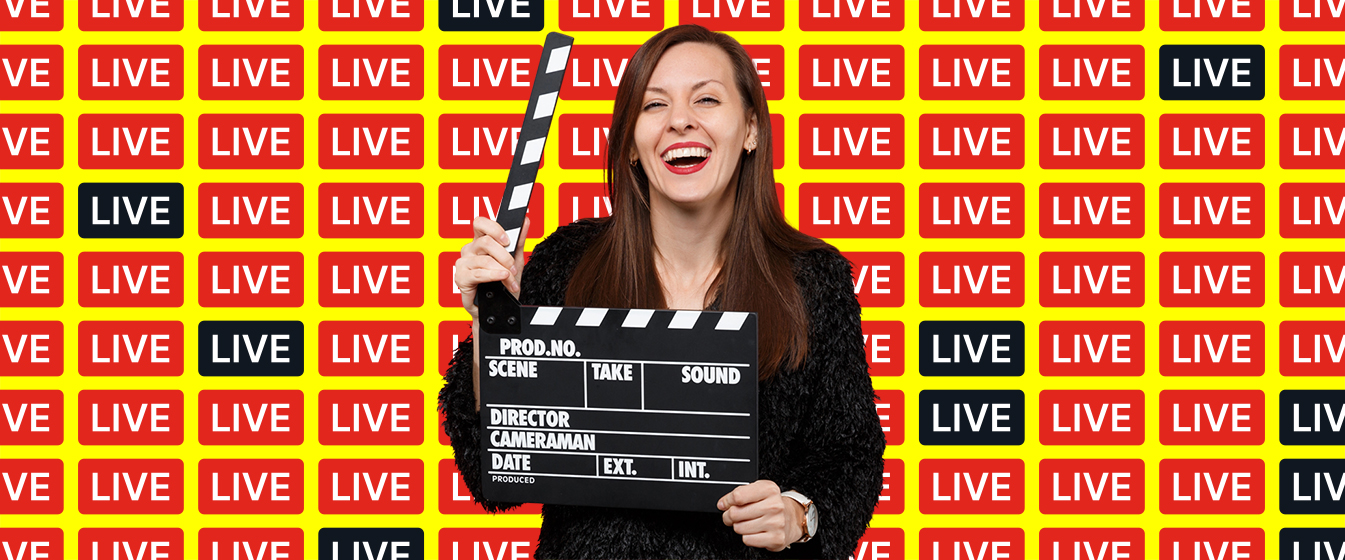Blog: Event design
Could the shift to work-from-home actually be the salvation of in-person events?
8 December 2022 minute read

Last week I dug out a suit I can still fit into, packed my toiletries into a clear bag and headed off to join the rest of the event industry at the IBTM congress in Barcelona.
And I have to say that, to me at least, it looked much as it did before the pandemic.
A huge affair, IBTM still takes up most of the city’s sprawling Fira complex, and it still took me a solid 15 minutes to walk from one end of the exhibition to the other. In all, some 10,000 people from 150 countries milled throughout the space, wearing wristbands and badges, but relatively few masks.

Of course, many of the attendees will now spend the majority of their time working from home, and they use events like this as a way to get the professional interactions they’re missing.
These days, work is (mostly) a solo affair where one can concentrate and get things done. Conferences, on the other hand, are for networking, socialising with colleagues or peers in your field and getting experiences you can’t get working remotely.
So I got to wondering: could conferences now actually be sustaining and augmenting our ability to work from home? Might hanging out with colleagues and clients in person a few times a year be enough to carry us through months and months of endless video calls?
I too spend much of my time working from home these days, and I went to Barcelona, partly for meetings, and partly to try to figure out why people like me are leaving the comfort of their homes to get on a plane and join an in-person conference when there’s still (strictly speaking) a pandemic going on.
A number of people I spoke to during the two days told me they were using conferences like this, as well as intra-company offsites and regular travel, as occasions to convene teams and even whole companies, since they don’t see each other that much while working from home.
‘We’ve taken a chunk of the money we’ve saved on office space and put it into travel and professional development,’ the CMO of a software intelligence company told me. The cash that used to go on deskspace in London and San Francisco is now used to bring the company’s 200 global employees together for conferences and quarterly reviews, as well as some good old-fashioned socialising.
‘We try to pack as much as we can into a few days, then everybody goes home and gets on with their work.’
The last time I’d been at IBTM was in 2018, when it didn’t feel as weird to be around 10,000 other humans from every imaginable country. And aside from a smattering of masks and a super-abundance of hand sanitiser, it didn’t look that visibly different.
But what had changed was the emphasis. Because while the educational content and panel discussions were still important, it was clear that the organisers (and exhibitors) had leaned in to the more social and experiential aspects of the show.
The demonstrations, parties and receptions were all a bit more carefully planned, a bit more engaging and just a bit more memorable.
There had always been gatherings with entertainment and drinking after-hours, but this year these events were bigger and more prominent. The food was better. The drinks were nicer.

People tell me that a similar thing has been happening at other events as well – at giant tech conferences like SXSW and at sales conferences like Outreach Unleash and Seismic Shift.
In addition to world-class speakers, conferences are increasingly touting their tropical climates, water sports, and wine tastings. They’re also being careful to orchestrate intimate in-person interactions that don’t feel like they can be replicated online.
Of course, the trend of turning conferences into immersive, interactive social events – as opposed to passive ones where people simply consume presentations – existed before COVID. But the pandemic has accelerated it, and now companies are letting workers choose where they work, those qualities are becoming more sought after.
‘The main driver to come here was to connect with people and know what was happening in my world’, a conference producer told me as we waited at the bar during a rather snazzy party at the Brussels pavilion.
This is encouraging news, since global conference attendance is currently still at just 50% of 2019 levels, according to data from demand intelligence company, PredictHQ. Business group travel spending – which includes spending on meetings and events like conferences – is at 68% of 2019’s numbers domestically, and 50% internationally, according to data from the US Travel Association.
Interestingly, among the conference producing and media companies I speak with, their biggest sales growth in 2022 has been in group bookings, teams or even whole companies – rather than individuals, buying tickets.
According to Melanie Brucks, business marketing professor at Columbia Business School, this basic human need for connection and creative spark could be the single biggest cause for optimism for the business events market:
‘I actually think that conferences can be a solution to working from home’.
‘What we find is that people are less creative and generative when they’re interacting virtually.’ This makes sense when you consider that most day-to-day office tasks work just fine online, supported by the interminable Teams calls.
With just under half of UK workers expected to continue working from home at least some of the time (that rate is higher for people with university degrees), their need for connection and inspiration could provide some succour for the business events market, even if things don’t quite go back to how they used to be.
The return to in-person conferences this year has highlighted some of the shortcomings of virtual ones – and of virtual work in general.
Roughly a quarter of the fintech conferences my fellow guest at the Brussels party worked on in 2022 were in-person. Of course that’s up from practically zero over the previous two years. Next year, he says, it looks like more than 80% will be in-person.
While most of events we know and love were held virtually over the past couple of years, they weren’t really the same. It was always tempting to try and multitask and do something else while sitting in front of your computer. And even in smaller breakout sessions, it was nearly impossible to conjure the intimacy and candour of talking with people you bump into at conferences.
Another side effect of working from home is that people aren’t growing their professional networks as much as they did when they went into the office every day. That means fewer, and weaker, connections – the relationships you have with acquaintances outside of your work or social group that have proved incredibly important for things like bringing in business, finding a new job or even just fresh ideas.
So far, so good - but there’s a catch
People treat their time more jealously than they did pre-pandemic, so conferences and companies will have to go the extra mile to get them out of the house. Just look at the degree of push-back you’re seeing from rank-and-file employees asked to start returning to the office. Managers haven’t really figured out a good reason for people to be there. Workers are returning to offices only to find themselves spending their whole day at their computers, only now with the added drawback of a commute.
So if in-person conferences are going to bounce back, they’re going to have to make their events something you can’t get online.
The basic premise of most conferences, it seems, has remained largely unchanged. People sit in an auditorium and listen to speakers talking on stage, possibly with some slides.
But now, the more innovative conference organisers are turning their attention to aspects of the event that can’t be delivered online – specifically, they’re focusing on social interactions and physical experiences.
A good example is the Aspen Institute’s flagship Ideas Festival which has taken agenda time away from theatre-based presentations and given it to more breakout sessions, workshops, and hands-on field trips where people can connect over shared experiences.
Last summer, they organised attendees to take samples of microplastics in a nearby river and to see regeneration happening after wildfires, as part of the conference’s larger discussion about climate. The idea was to show them how even a pristine-seeming environment wasn’t immune to pollution.

Clearly, we can’t all do something quite as impactful as the Aspen Institute. But the key is to do things that are memorable, and for which you have to be there. In person.
It could be morning yoga sessions, picnics, playing games, the chance to experience a new product, drive a new vehicle, learn a magic trick, try LSD for the first time. OK, maybe not LSD – but you get the idea.
If you can design moments when something happens that gives attendees something to talk about with the next person, basically you’re there.
Savvy organisers are also tapping in to an unfortunately named trend called ‘bleisure’ (I know) in which people are tacking vacations onto work trips. Personally, I’ve been doing this for over 20 years, but apparently it’s becoming even more of a thing.
It’s why more and more conferences are locating themselves in so-called destination cities, if they hadn’t already. And it works. If I’m honest, one of the reasons I was keen to go to IBTM was because it’s in one of my favourite cities, Barcelona.
So it’s just possible that the post-pandemic world of work-from-home will end up being the salvation of in-person events. But only for those planners who understand that the world of work has changed, and with it, the needs and expectations of conference-goers everywhere.



